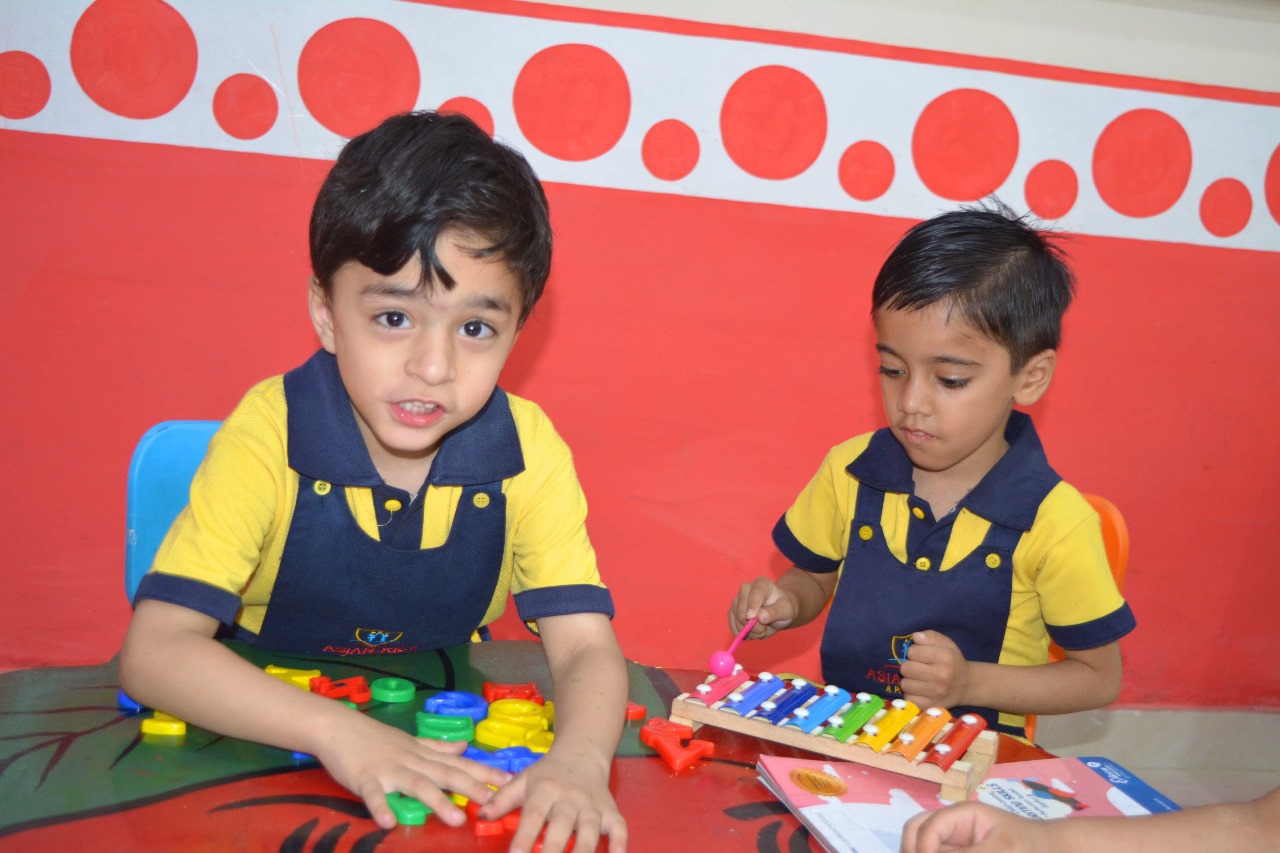Lower Kindergarten (LKG) ( Age Group 3-4 Years )
It is believed that in the time of the absorbent mind which is from the birth to 6 years, the joy of learning is more evident and effortless than perhaps at any other stage of life. Through natural curiosity, the child absorbs information, assimilates it with his senses, and constructs his own knowledge. Children strengthen physical skills and social skills as they walk on balancing beams, fall on crash mats, climb on rock walls, jump under parachutes, ride scooters, and swing on ziplines. In the active play area, children have access to open-ended play equipment where they develop their gross-motor skills through playing football, cycling, crawling and climbing on mounds. The
Key Areas in Curriculum
outdoor social area is an interactive and collaborative space with a sand pit, water tub and a pretend play area. In literacy, children start with a phonics program that promotes their oral and reading skills as well as build their writing skills through several art and pre-writing explorations. In math, children learn counting, measurement, patterns,
- Learning by exploration
- Building communication skills Encouraging positive peer interaction
- Theme based Concept Time
- Math Readiness
- Language Readiness
- Opportunities for fine and gross motor development
- Promoting cognitive development geometry, and data handling.
The areas are well equipped with light tables, mirror tables, montessori materials and children learn by playing, making, drawing, recording, and solving. Students also engage in various kinds of visual art activities such as sketching, painting, creating illustrations, cartoonmaking and texture-making. Children are not limited to traditional tools and techniques but instead have access to a range of natural and synthetic art tools such as rollers, stamps, sponges, steel scales, leaves, stems, and many varieties of paper. Children engage in reading individually or in pairs, listening to read-alouds and performing plays with peers. Our reading area acts as a reef of calm where children can escape the hustle and bustle of the classroom. Children this age start utilizing their senses to examine, discover, categorize, and interpret the materials presented to them. From observers they turn into scientists, creating hypothesis about each material, its properties, and its purpose. This area hosts a water and sand table, a sensory table with different touch and feel materials, and a sensory wall. Children use these materials to test several theories by experimenting with them. The pretend play station is complete with a kitchen, a dining table, a hospital, mirrors, costumes, and props. Children spin their own tales or recreate experiences they’ve seen or read. Dramatic play helps children make sense of their world by translating their abstract thoughts into concrete actions. Children build their social interaction skills and learn to use various tools by spending time in this area.








